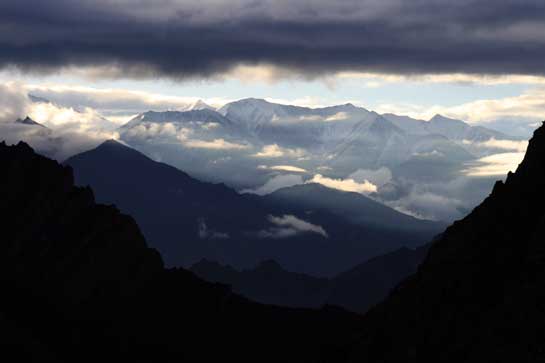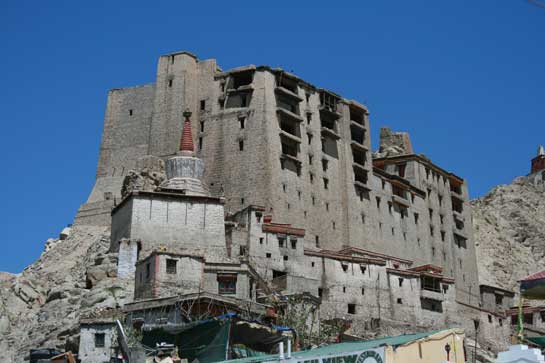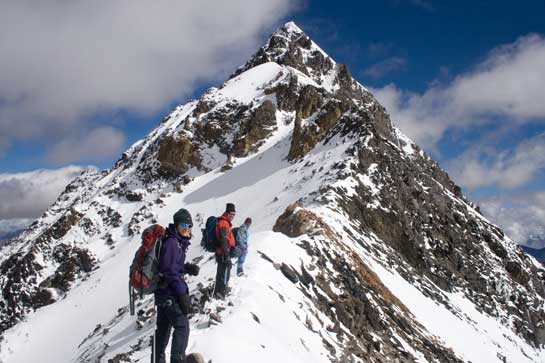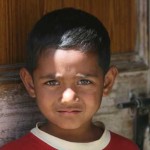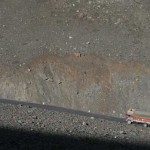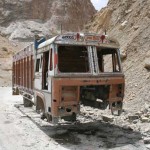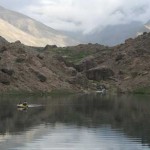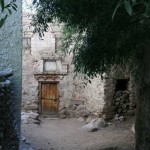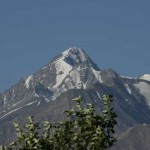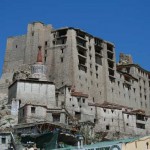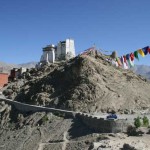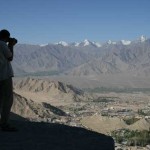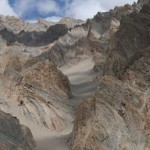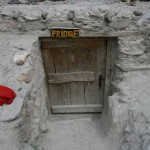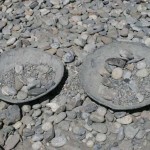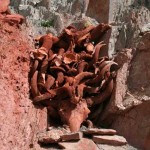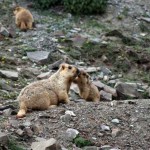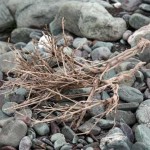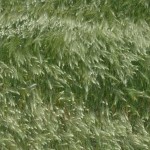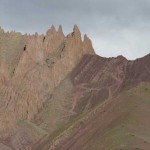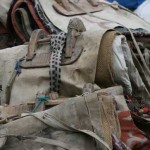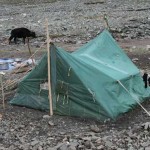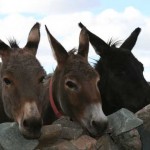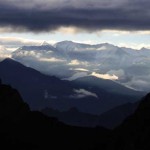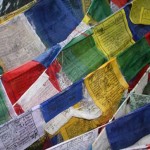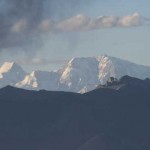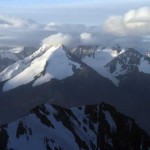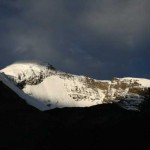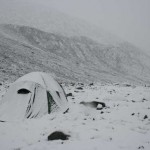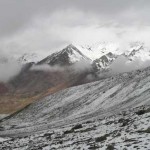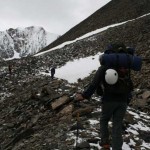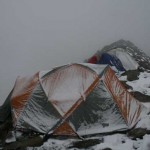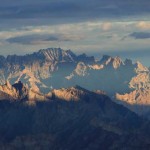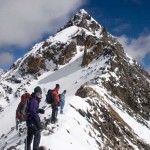Ladakh offers Trekking by the Ton and Mountaineering by the Mile. In Summer of 2008 I ventured there with good friends to climb, trek and see a little of this wonderful country…
The road to Leh must rate as one of the best and most exciting journeys in the world. The Leh-Manali Highway crosses some of the highest mountain passes in the world, including Rohtang La (3,978 m, 13,050 ft), Baralacha La (4,892 m, 16,050 ft), Lachulung La (5,059 m, 16,600 ft) and Taglang La (5,325 m, 17,470 ft), and is open only between June and mid-September when the passes are clear of snow. The surface ranges from brand new tarmac to avalanche washed rock and gravel and never allows you a dull moment as you bounce around in your jeep. It takes two days of hard, bum numbing driving to cross the mountains and enter Leh, where you can relax and get your nerves to work again!
Leh is the capital of Ladakh and sits high in the mountains at 3,500 meters (11,483ft). In the Distance Stok Kangri dominates the skyline and gives many a taste of what is to come. Leh is well known by travellers and offers an excellent base for trekking, climbing, cycling and rafting in Ladakh. Due to its high altitude, many people relax here for a few days to start the long process of acclimatisation, before trekking and climbing in the mountain ranges nearby. The summer weather brings hot and dusty days followed by cool, calm nights.
We took a few days in Leh to prepare for our trek and to visit some of the local sights, including the ancient fort and palace, before setting off into the mountains.
The climbing team was originally six strong, but illness cut us down to three before we left Leh. Besides myself were Jamie & Clare Glazebrook. Jamie, an old Raleigh International friend and his wife Clare had traveled to Ladakh three years before and were the originators of the expedition. Between them they have traveled extensively through Asia and climbed to over 6000m. As for me, well you ought to know by now…
The remote and mighty valleys of the Markha and Zanskar Rivers provide ample opportunities for multi-day trekking. This has made them popular with travelers, perhaps too popular. One moment you can be alone in the wilds and the next a busload of people pass by complete with all the paraphernalia of ponies and Sherpa’s. It can feel quite strange… Great passes must be crossed to enter the ranges, some over 5000m (16,404ft) high, which demand stamina, fitness and a state of mind which says “Not long to the top now!” We trekked for five days before reaching base camp for Stok Kangri, our first peak.
The Summers in Ladakh are supposed to bring hot sunny days and cold, clear nights. The area sits in a rain shadow and should only receive a few inches of rain every summer. We met trekkers leaving the area with severe sunstroke and feared the worst, but the British summer followed us there, bringing rain and even snow! Our guides had not seen weather like it for ten years. Rain and Snowfall change everything in the mountains. Paths become impassable and snow puts a new perspective to climbing routes. The weather played a cruel game of cat and mouse with us for most of the trip…
Standing at 6137m (20,135ft), Stok Kangri is an excellent acclamitisation peak. She is relatively easy to climb with fields of scree and snow and is accessible to many people. Rumour in Leh was that the peak required no snow or ice climbing equipment due to previous hot weather burning back the winters deposits, but these rumours can be dangerous. It is far too easy to climb unprepared on such peaks and get caught out. We summited successfully on 8th August climbing mainly rock scree to the top, but as we descended, thick cloud engulfed the peak and dumped piles of fresh, unstable snow.
Sitting at the Northern end of the Zanskar Range, the 6394m (20,978ft) technical peak of Kang Yatse is renowned for it’s difficult ascents. After our successful climb on Stok Kangri we all felt well acclamitised, but the weather was a major concern. Fresh snow plastered the higher slopes and even poured down onto Base Camp. The normal High Camp has also been washed away by either snow or ice fall. Our team of Sherpas fought hard to establish a new camp on the SE Ridge, but the summit day itself was too much for us. Poor snow conditions, technical difficulties and sheer physical exhaustion forced us to turn around 150 vertical feet from the summit. To see it so close and turn around was difficult to face, but it was the right decision. Reaching the summit is only half the battle in climbing, and getting down in one piece is more important than standing on the summit.
Did I have any regrets about turning around..? None, before you ask. Not being able to summit Kang Yatse was a great disappointment, but one which I have accepted and have no problem with at all. I think society will have more of a problem than I, as we live in a world governed and measured by success. Does it have a right to do so? I don’t think so. Kang Yatse took every ounce we had and still defeated us. If you have done your best, then what else can you do?
One problem I did se and which gets right up my nose is Litter. I do wish people would take better care of the environment as it is strewn across the paths of Ladakh. Plastic bottles and packets of every kind adorn the ground, and there is no excuse for it. Many of us love going to these environments and the least we can do is make as little impact as possible. How hard can it be to bring your waste out and to dispose of it correctly?
